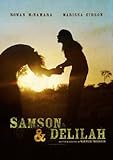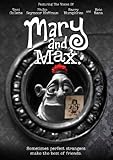From RampUp:
This time two years ago, I wrote a blog for The Vine about Australian television’s odd approach when it comes to employing actors of differing abilities.
The inspiration came when – a rare occasion – I watched an episode of Seven’s ratings juggernaut Packed To The Rafters. Jessica Marais’ character had finally taken the plunge and been introduced to the extended family of her “hot tradie” boyfriend Jake, including his “cheeky” brother Alex, who has cerebral palsy.
Alex was played by Kristian Schmid, who doesn’t have cerebral palsy.
It wasn’t exactly something new; film and television has a long history of getting able-bodied actors to affect a disability.
It’s particularly noticeable in Hollywood, where “going disabled” is seen (somewhat cynically) as a sure-fire path to awards season glory; from Juliette Lewis playing the intellectually disabled Other Sister to Daniel Day Lewis’ Oscar-winning performance as Christy Brown in Jim Sheridan’s My Left Foot, it’s unofficially considered the true test of an actor’s mettle alongside, perhaps, a convincing turn in a biopic.
So from that perspective, Schmid’s performance as Alex wasn’t that surprising, nor was the casting department’s decision to go with him, an established and well-liked actor with plenty of Australian soapie suds on his CV.
Not surprising, that is, but plenty disappointing. Here’s what I said at the time:
I’m sure many of you are thinking “so what, that’s why they call it acting”, but doesn’t the very nature of inclusiveness – at least in the context of including storylines that relate to people with disabilities – suggest that it might be proper to, you know, actually include actors with disabilities?
The American and UK film and television industries are a few steps ahead of Australia in this regard (though it must be said, not many); in particular the Law & Order franchise and Nip/Tuck have more than occasionally featured actors with disabilities, and the LA Times reported in 2008 that opportunities (and in turn, agents!) for actors with disabilities were on the rise.
In this enlightened era, we look back at Mickey Rooney playing Japanese or heavily fake-tanned “jungle types” and wince; so why don’t we bat an eyelid when actors pretend to have cerebral palsy, or pretend to be in wheelchairs, and so on?
Taking our television and film canon as a user’s guide, you could be forgiven for thinking that Steady Eddy (as much as I love him) was the only Australian actor with a disability to have ever existed.
Now, when I wrote the piece, I certainly wasn’t expecting the Australian television industry to fall at my feet in apoplexies of apologia, but I certainly didn’t expect to be revisiting the exact same topic two years later.
Yes, Alex is back on Packed To The Rafters.
Fair enough, since the last time an Australian soap switched actors mid-stream (remember when Home & Away’s Bec Cartwright went to sleep and woke up as Ella Scott Lynch?) it failed dismally. There’s nothing wrong with continuity in casting.
But as an indication of where Australian television is at – or isn’t – it’s pretty grim.
Why are we, as an industry, dragging our feet when it comes to improving the diversity on our televisions?
Back in 2009, I talked about the character of Toby in Summer Heights High. There was much hand-wringing about whether or not his Down’s syndrome was simply there for shock value (certainly the debut of “Toby & The Special Dancers” at the Logies that year was); was the character just there to provide easy “spastic” jokes?
I disagreed then, and I still do. The thing about Summer Heights High is that everyone in the school is a potential punchline; in that sense, Toby’s equal with everyone else. As I said then:
[J]ust like millions of other state school students, Toby enjoys drama class. So how come the buck stops in Year 12 for so many aspiring actors who also happen to have disabilities?
One of the good things about the character of Alex in Packed To The Rafters is that his personal arc is less about his having cerebral palsy as it is his life as a party-hard chick-magnet. By that token, wouldn’t it be great if an actor with cerebral palsy was playing the character?
Look at RJ Mitte, who plays Walt Jr/Flynn on Breaking Bad; Mitte has mild cerebral palsy, as does Walt Jr, and that’s about the end of it. His character arc involves much more than “having cerebral palsy” – same, would you believe, as real live people living with disabilities!
And that’s where the territory gets murky. If film and TV only employ actors with disabilities to, in effect, play themselves, isn’t that almost as bad as not employing them?
English actor Warwick Davis, who has dwarfism caused by spondyloepiphyseal dysplasia congenita, often spoke of his desire to play an ordinary guy. With a career that has taken in roles as an Ewok, The Leprechaun and various imps and goblins, it’s easy to see why.
(Funnily enough, his breakout role as Willow was, until recently, the closest he’d come to playing a character whose motivation had little to do with his height; the Nelwyns were short, and not much more was made of it.)
Davis’ new BBC show with Ricky Gervais and Stephen Merchant, Life’s Too Short has seen that wish come true; the show, which Gervais has described as a mix of The Office and Extras, is a mockumentary about Davis that satirises many of the things he has experienced throughout his career.
Likewise, the rise and rise of Peter Dinklage is encouraging. It was perhaps prophetic that his first role, in 1995’s Living In Oblivion, contained a blistering (and sweary) rant about the use of dwarf actors.
Since then, he’s been “Peter Dinklage, actor”, not “Peter Dinklage, dwarf actor”.
Stalling based on a fear of typecasting or fetishising actors with disabilities is counterproductive, though; given Australian film and TV barely features disabled actors as it is, it’s a little early to start worrying whether the roles offered are the right roles. We could start with offering any roles at all.
The worst part is, there’s no reason for it to be like this.
As I said in 2009:
Australia is home to a number of theatre companies dedicated to working with actors with physical and/or intellectual disabilities; Back To Back Theatre has received countless raves for its affecting and thought-provoking pieces.
[…]
[A] 2007 review of Back To Back’s Small Metal Objects (which played at the Melbourne International Arts Festival a couple of years back) noted that in watching the work “we are asked to revisit what we think a so-called impaired human being is capable of”.
Perhaps it is time for the Australian television industry to revisit what they think so-called impaired human beings are capable of: acting.
It’s 2011, is anyone out there in TV-land listening?
Clem Bastow is a film and TV critic for The Vine.[/quote]



